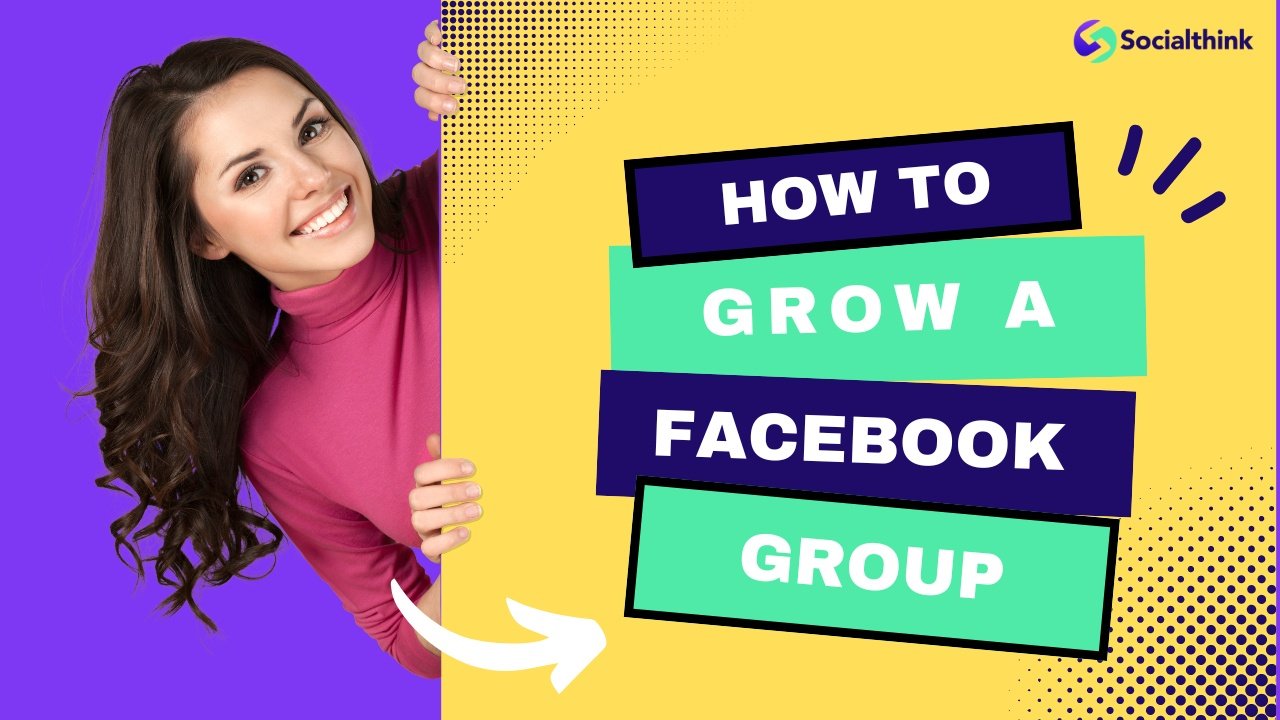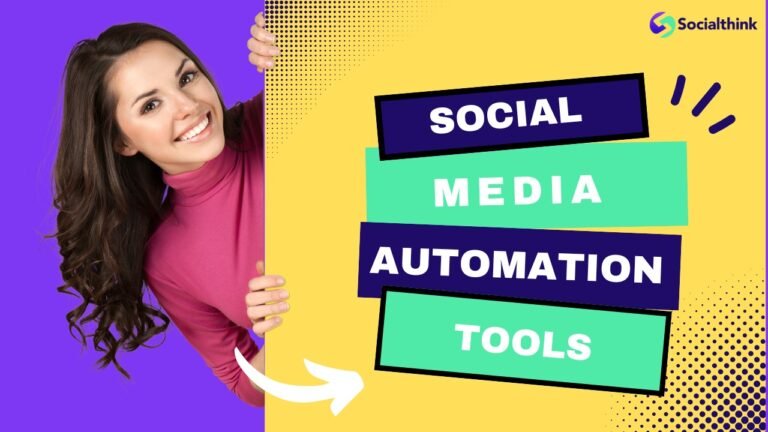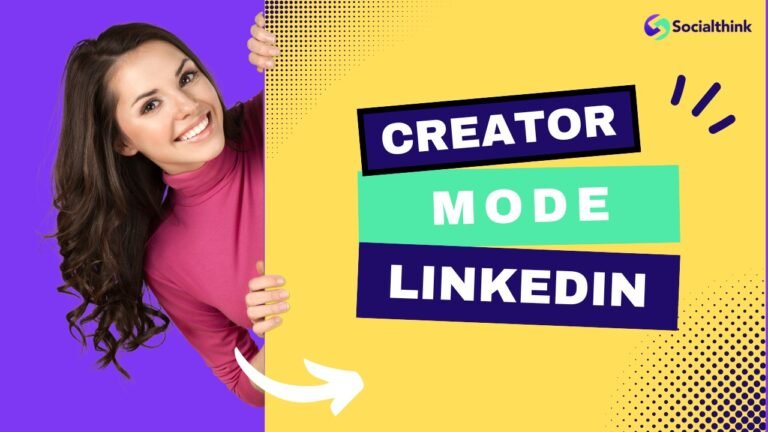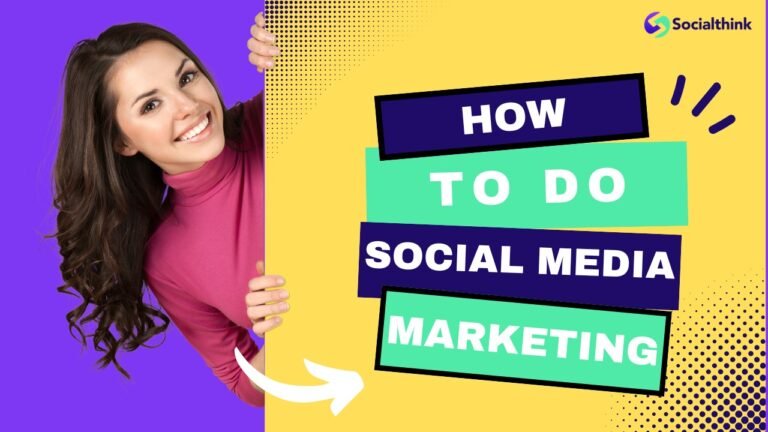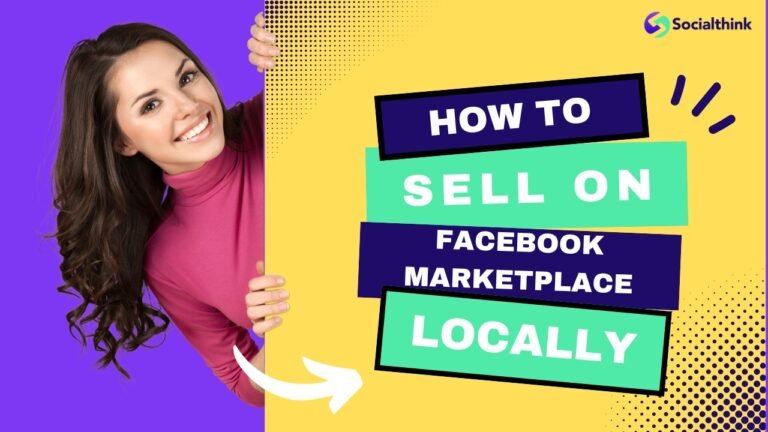How to Grow a Facebook Group Quickly For FREE
Facebook groups have become an essential part of any comprehensive social media strategy.
At Social Think, we specialize in helping businesses leverage the power of Facebook groups to build engaged communities, drive brand awareness, and achieve their marketing goals.
In this ultimate guide, we’ll share our expert insights and proven strategies to help you grow your Facebook group from zero to thriving.
Why Start a Facebook Group?
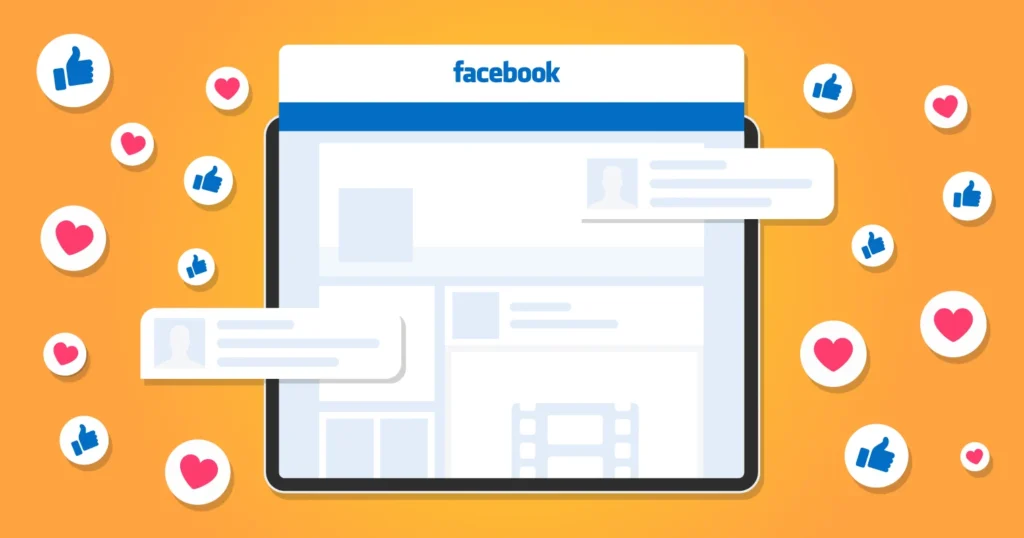
The Role of Facebook Groups in Social Media Strategy
Facebook groups offer a unique opportunity to create a dedicated space for your target audience to connect, engage, and share their experiences related to your brand or industry. Unlike a Facebook page that focuses more on broadcasting content, a Facebook group fosters two-way communication and community building.
Types of Facebook Groups and Their Unique Features
There are three main types of Facebook groups: public, closed, and secret.
Each type has its unique features and benefits. Public groups are open to anyone and can be found through search, making them great for growing your audience. Closed groups require approval to join, allowing for more control over membership. Secret groups are invite-only and do not appear in search results, providing a more exclusive experience.
Why You Should Grow Your Facebook Group?
Growing your Facebook group offers numerous benefits for your business. A thriving group can:
- Increase brand awareness and reach
- Foster customer loyalty and advocacy
- Provide valuable insights into your target audience
- Generate leads and drive sales
- Establish your brand as a thought leader in your industry
How to Create an Engaging Facebook Group?
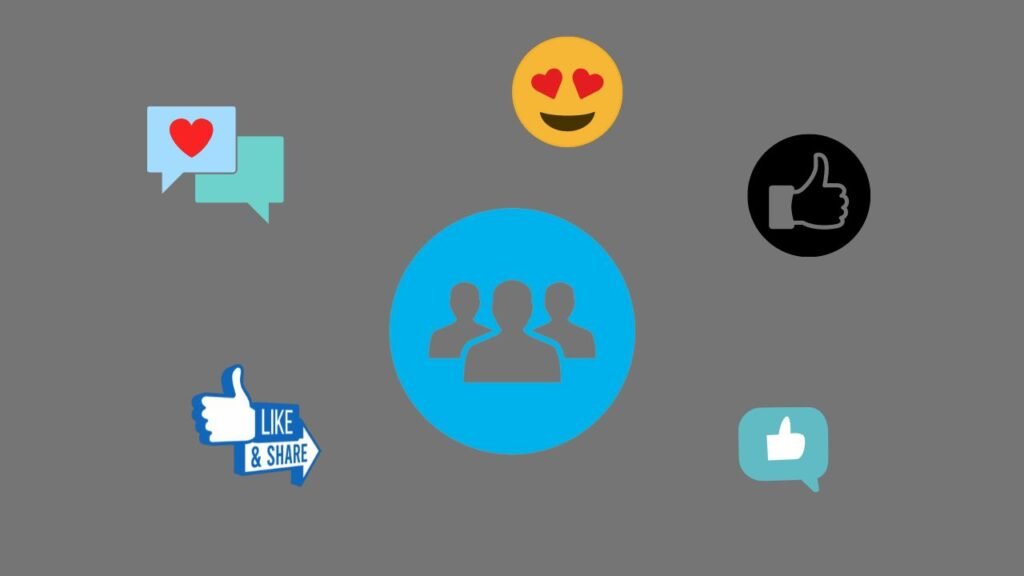
Creating a Facebook Group is just one of the first simple steps. To make it a lively place, you need to build a strong base that inspires people to talk and get value. Start by choosing the right type for your group, writing an engaging description, and setting clear rules.
A well-organized group creates community, clarity, and purpose. This will attract people to join and also encourage them to take part and share.
Choose the Right Group Type
When creating your Facebook group, consider your goals and target audience to determine the best group type. A public group may be the way to go if you want to maximize reach and growth, especially if you are using it as a platform for content marketing.
A closed or secret group might be a better fit if you prefer more control over membership or want to create a sense of exclusivity and clearly define the purpose of your Facebook group. Be sure to also include a group description that provides an in-depth explanation of the Facebook Group’s background and guidelines for members.
Optimize Your Group Name and Description
Your group name and description are important for attracting potential members and setting expectations for your community. Choose a clear, concise name that reflects your group’s purpose and includes relevant keywords. Use the description to provide more details about your group’s focus, target audience, and the value members can expect to receive.
Set Clear Group Rules and Guidelines
Establishing clear rules and guidelines helps maintain a positive and productive environment within your Facebook group. Consider factors such as post frequency, content types, and member behavior expectations. Communicate these guidelines clearly in your group’s description or pinned post.
How to Grow a Facebook Group from 0?

Building a Facebook Group requires various strategies. Combine real interaction with promotions. Even if you dont have money to spend, starting small initiates growth, attracting more members. Consistency is crucial for growth. Slowly but consistently applying these steps, you will see your group will expand rapidly. Soon, it will be a popular online hub in your niche.
- Optimize Your Facebook Group’s Info: Make sure your group’s name, description, tags, and cover photo are optimized for search and accurately represent your group’s purpose. This will help potential members find your group and understand what it’s about at a glance.
- Send Out an Email Blast: If you have an existing email list, let your subscribers know about your new Facebook group. Provide a compelling reason for them to join, such as exclusive content, special offers, or the opportunity to connect with like-minded individuals.
- Cross-Promote on Other Social Media Platforms: Leverage your presence on other social media platforms, such as Twitter, Instagram, or LinkedIn, to promote your Facebook group. Share the group link and highlight the benefits of joining your followers on these platforms.
- Add CTAs to Your Facebook Posts: Include calls-to-action (CTAs) in your Facebook page posts, encouraging your followers to join your group. Highlight the unique benefits and experiences members can expect within the group.
- Leverage Other Facebook Groups For Promotion: To grow your Facebook group, find groups with your target audience. Engage by sharing insights and mentioning your group. Follow group rules to avoid spamming.
- Use Facebook Live: Host Facebook Live sessions within your group to engage members and attract new ones. These live streaming sessions can showcase your expertise, provide valuable content, and encourage interaction among members. Make sure that you fix a time for your live streams
- Include Your Facebook Group in All Social Media Bios: Add a link to your Facebook group in the bios of all your social media profiles. This makes it easy for people who discover your brand on other platforms to find and join your community on Facebook.
- Collaborate With Influencers to Reach New Audiences: Partner with influencers or thought leaders in your industry to promote your Facebook group to their audiences. This can be done through guest posts, interviews, or even having them host a live session within your group.
- Create High quality, Shareable Content: Consistently share valuable, relevant content within your Facebook group to keep members engaged and encourage them to invite others. This can include blog posts, infographics, videos, or exclusive insights tailored to your group’s interests.
- Don’t Neglect Your Existing Group Members: To grow your Facebook group, focus on engaging with current members. Interact with their posts, seek feedback, and encourage connections. Active engagement within the group will naturally draw in new members.
Strategies to Grow Your Facebook Group

- Promote Your Group on Your Facebook Page: Leverage your existing Facebook page audience to drive traffic to your group. Share posts about your group’s activities, member success stories, and the benefits of joining. Include a clear CTA and link to your group in these posts.
- Encourage Members to Invite Their Networks: Your current group members can be your best advocates. Encourage them to invite their friends, colleagues, or family members who might benefit from the group. As Facebook group owners, most important strategy can be to interact with people who have many friends and ask them on a more personal level to invite their friends and family.
- Collaborate With Other Relevant Groups: Facebook’s algorithm loves engagement. Identify other Facebook groups that share a similar target audience or complementary focus. Reach out to the group admins and propose a collaboration, such as cross-promoting each other’s groups, hosting joint live sessions, or sharing valuable content.
- Share Valuable and Relevant Content Consistently: To keep your group members engaged and attract new ones, consistently share high-quality content that aligns with your group’s purpose. This can include industry news, tips, resources, or conversation starters. Aim to provide value with every post.
- Engage With Your Members and Encourage Discussion: Foster an active and supportive community within your Facebook group by regularly engaging with your members. Respond to comments, ask questions on group topics, and encourage members to share their experiences or insights. The more engaged your group is, the more likely it is to grow organically.
- Use Facebook Ads to Reach Your Target Audience: Facebook ads allow you to target specific demographics, interests, and behaviors, making them a powerful tool for reaching potential group members. Create compelling ad copy and visuals that highlight the benefits of joining your group and drive traffic to your group’s page.
Measuring the Success of Your Facebook Group
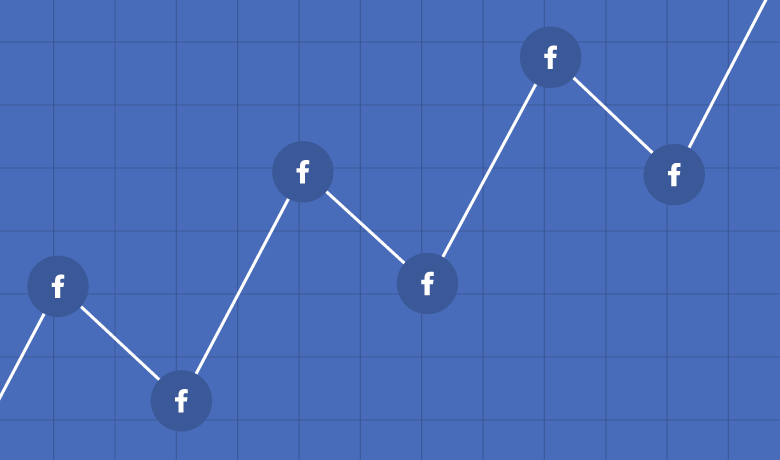
- Track Membership Growth: Keep an eye on your group’s membership numbers over time. Steady growth is a good indication that your strategies are working. Use Facebook’s built-in group insights to track join and leave rates, as well as the sources of new member requests.
- Monitor Engagement Metrics: Engagement is a key indicator of a healthy Facebook group. Track metrics such as post comments, reactions, and shares to gauge how involved your members are. High engagement levels suggest that your content resonates with your audience and encourages active participation.
- Survey Your Members For Feedback: Periodically survey your group members to gather feedback on their experience, content preferences, and suggestions for improvement. This valuable insight can help you refine your strategies and ensure your group continues to meet the needs of your target audience.
Common Mistakes to Avoid With Facebook Groups
- Neglecting to set clear group rules and guidelines
- Allowing spam or irrelevant content to flood the group
- Failing to consistently engage with members and moderate discussions
- Focusing solely on self-promotion instead of providing value
- Ignoring member feedback or concerns
- Letting the group become inactive or stagnant
The Future Of Facebook Groups

Facebook groups are set to become a bigger part of how we engage on social media. The platform is always changing and is focused on building communities. Because of this, groups will likely fit more into users’ online experiences.
New trends point to more personalized interactions and better tools for managing groups. There will also be improved privacy settings. New features will give members special ways to connect and interact. Since Facebook wants to focus on real connections, it looks like the future of groups will help create true online communities.
Emerging Trends in Community Building on Facebook
As Facebook continues to prioritize meaningful interactions and community building, groups are likely to become even more central to the platform’s ecosystem. Brands that invest in creating thriving communities will be well-positioned to benefit from this trend.
Leveraging New Facebook Features For Groups
Facebook regularly introduces new features designed to enhance the group experience, such as improved moderation tools, Q&A functionality, and subscription options. Stay up-to-date with these developments and leverage them to create an even more engaging and valuable community for your members.
FAQ’s:
How Can I Increase My Facebook Group Members Organically?
To increase your Facebook group members organically, focus on consistently providing valuable content, engaging with your existing members, and encouraging them to invite others. Collaborate with other relevant groups, leverage your Facebook page audience, and optimize your group’s info for search.
How Do I Get My First 1,000 Members in a New Facebook Group?
To get your first 1,000 members, promote your group across your existing channels, such as your email list, social media profiles, and website. Run targeted Facebook ads, collaborate with influencers, and engage in relevant Facebook groups to attract potential members.
What’s the Fastest Way to Grow a Facebook Group?
The fastest way to grow a Facebook group is through a combination of targeted Facebook ads, collaborations with influencers or complementary groups, and leveraging your existing audience on other platforms. However, it’s important to balance rapid growth with maintaining a high-quality, engaged community.
Should I Make My Facebook Group Public or Private?
The decision to make your Facebook group public or private depends on your goals and target audience. Public groups are more easily discoverable and can grow faster, while private groups offer more control over membership and can foster a sense of exclusivity and trust.
How Can I Use My Facebook Page to Drive Traffic to My Group?
To use your Facebook page to drive traffic to your group, regularly share posts about your group’s activities, member success stories, and the benefits of joining. Include clear calls to action and links to your group in these posts. You can also add a “Visit Group” button to your page to make it easy for followers to find and join your community.
The best way to promote your group on your page is by sharing its content and inviting your followers to join. You can also promote your group offline through flyers or personal interactions.
Don’t forget to provide the Facebook group link in all of your promotional materials, such as banner ads, pop-ups, invitations, and dedicated blog posts about the group. This will help inform your existing audience and attract new members to your Facebook group.
Conclusion
Growing a thriving Facebook group takes time, effort, and a strategic approach.
Following the expert strategies provided in this guide, will help you be on the path to establishing a thriving community that aligns with your business objectives. Keep in mind the importance of delivering value, interacting with your members, and consistently improving your approach through feedback and insights.
At Social Think, we’re dedicated to helping businesses succeed on social media. Our team of experts can provide customized strategies, in-depth analytics, and ongoing support to help you make the most of your Facebook group and achieve your marketing objectives.
Contact us today to learn more about how we can help you grow your community and drive meaningful results.

